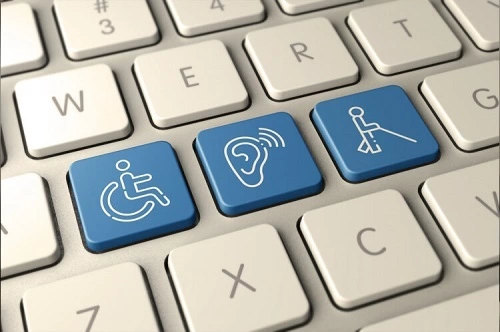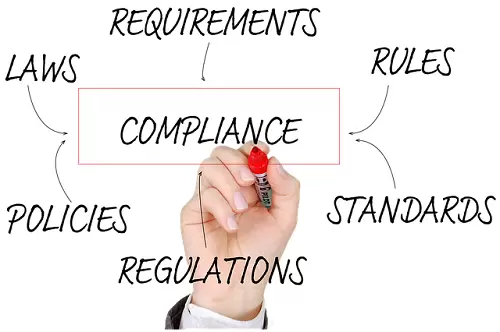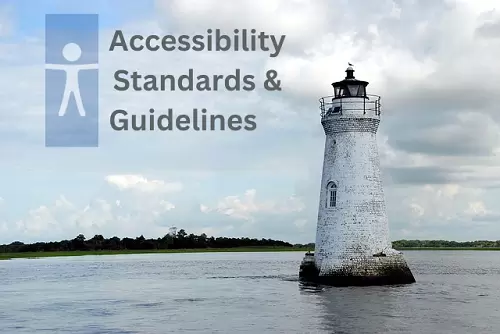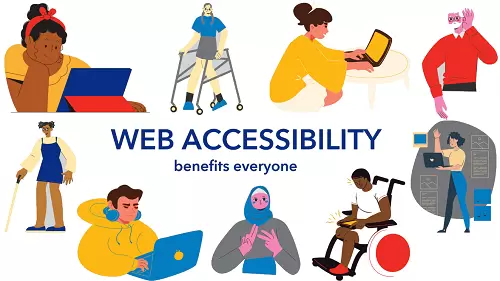Blog
What is Digital Accessibiity?
This section will help you understand some important accessibility concepts, features and benefits of Implementing accessibility. Please spend a few minutes reading the following.
Overview
Persons with various kinds of disabilities use assistive technologies such as screen reader, screen magnifier, speech recognition technologies, sign language interpreter software etc. to access web, mobile and desktop applications.
But these assistive technologies cannot function properly if user interfaces of web, mobile and desktop applications are poorly designed. Users with disabilities cannot interact comfortably and confidently with the interactive controls and they have frustrating experiences.
To provide accessibility of web and mobile content to users with disabilities, all the applications should be made accessibility compliant.
The citizen centric web sites of government and corporate organizations often fail to meet minimum web accessibility standards. Part of the problem lies with the policies itself.
Many of them fail to delineate a specific technical standard, fail to indicate whether compliance with the policy is required, fail to indicate a timeline or deadline for compliance, fail to define a system for evaluating or monitoring compliance, and fail to enumerate any consequences for failure to comply.
As more and more public centric information migrates to the web, it becomes increasingly important to ensure that those materials are accessible to people with disabilities. Functions such as various types of registrations, financial aid applications, notices, circulars, news, and events and so on are central to any person's experience in a day to day life. When those functions are available on the web, they allow access at any time, from anywhere.
For persons with disabilities, such online functions can either be liberating or limiting, depending on how the web content is constructed. If the content is constructed with web accessibility standards and guidelines, then citizens with disabilities are afforded a new level of freedom previously inexperienced. For example, blind citizens can use computer software that reads the web content out loud to them, thus eliminating their previous reliance on other people to read the content to them.
On the other hand, if the content is not designed with web accessibility in mind, then citizens with disabilities will be denied the benefits that should be available to them to the same extent that it should be available to all other people. The task of creating content that is accessible to persons with disabilities is not a difficult one, but it cannot happen automatically, without thought or design.
Web developers must be aware of the issues, they must know the techniques, and they must employ those techniques. For this to happen consistently over time, Government and corporate organizations must adopt both a policy and a system that supports web accessibility.
Why should we make web/mobile applications accessibility compliant?
About 6 percent of the world's population has a certain kind of disability. 9 percent of the world's total disabled population lives in India.
Providing accessible services to these people will help reach up to them. Making web/mobile applications accessible for people with disabilities is not charity but it is one of the business activities that will bring one large segment of the population under the business. Recently India has signed and ratified United Conventions on Rights of Persons with Disabilities (UNCRPD).
Providing accessible services to people with disabilities is essential for Governments and corporate organizations. Rights of persons with disabilities act 2016 has made it mandatory for all Governments, public, private and non-Government organizations to provide their products and services accessible and usable for people with disabilities.
Recently, MCIT, Government of India has designed a national electronic accessibility policy for persons with disabilities which also emphasizes accessibility standards implementation in all Government web portals. Such laws are available in almost all developed countries. The Government of India has also launched an Accessible India Campaign for making environments barrier free and accessible for everyone including persons with disabilities.
Implementing WCAG 2.0 accessibility standard of W3C will fulfill the accessibility standards of several countries. In the first view, it has been found that almost all Government portals are not fully accessible for people with disabilities. They are not designed as per national and international accessibility standards.
What are the benefits of web accessibility compliance?
Financial gains and cost savings from increased potential market share, increased SEO ranking, and increased usability.
Reducing risk of legal actions resulting in high legal expenses and negative image/reputation.
The public relations benefits of demonstrating social responsibility.
The portal will be eligible for a national award for empowerment of persons with disabilities in the best accessible website category which is presented by Hon. President of India and carries a cash amount of INR 100,000.
General features of accessible website
- Compatibility with screen reader and screen magnifiers like assistive technologies.
- Skip to content and skip to navigation links for easy navigation
- Color scheme and font size changing feature.
- Labels for images.
- Appropriate headings and landmarks for navigation.
- Proper page title and labeling to links and buttons.
- Accessible form fields.
- Accessible rich media.
- Accessible scripted element for better interoperability.
- Accessible controls like drop down menus, buttons, links etc.
- Captions for audio-visual media.
- Accessible data tables.
- Search Engine Optimization.
- Cross browser compatibility.
- Responsive website to also run smoothly on mobile devices and tablets.
- Accessible non-HTML content.
For more information you can refer following websites
- The W3C Web Accessibility Initiative (WAI)
- International Association of Accessibility Professionals (IAAP)
- The Global Initiative for Inclusive ICTs (G3ict)
- Web Accessibility In Mind (WebAIM)
For more Accessibility Procurement Q & A Questions and answerplease visit our FAQ




